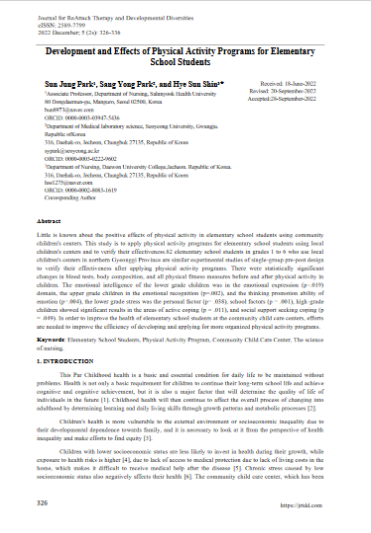Development and Effects of Physical Activity Programs for Elementary School Students
Main Article Content
Abstract
Little is known about the positive effects of physical activity in elementary school students using community children's centers. This study is to apply physical activity programs for elementary school students using local children's centers and to verify their effectiveness.82 elementary school students in grades 1 to 6 who use local children's centers in northern Gyeonggi Province are similar experimental studies of single-group pre-post design to verify their effectiveness after applying physical activity programs. There were statistically significant changes in blood tests, body composition, and all physical fitness measures before and after physical activity in children. The emotional intelligence of the lower grade children was in the emotional expression (p=.019) domain, the upper grade children in the emotional recognition (p=.002), and the thinking promotion ability of emotion (p=.004), the lower grade stress was the personal factor (p= .038), school factors (p = .001), high-grade children showed significant results in the areas of active coping (p = .011), and social support seeking coping (p = .049). In order to improve the health of elementary school students at the community child care centers, efforts are needed to improve the efficiency of developing and applying for more organized physical activity programs.

